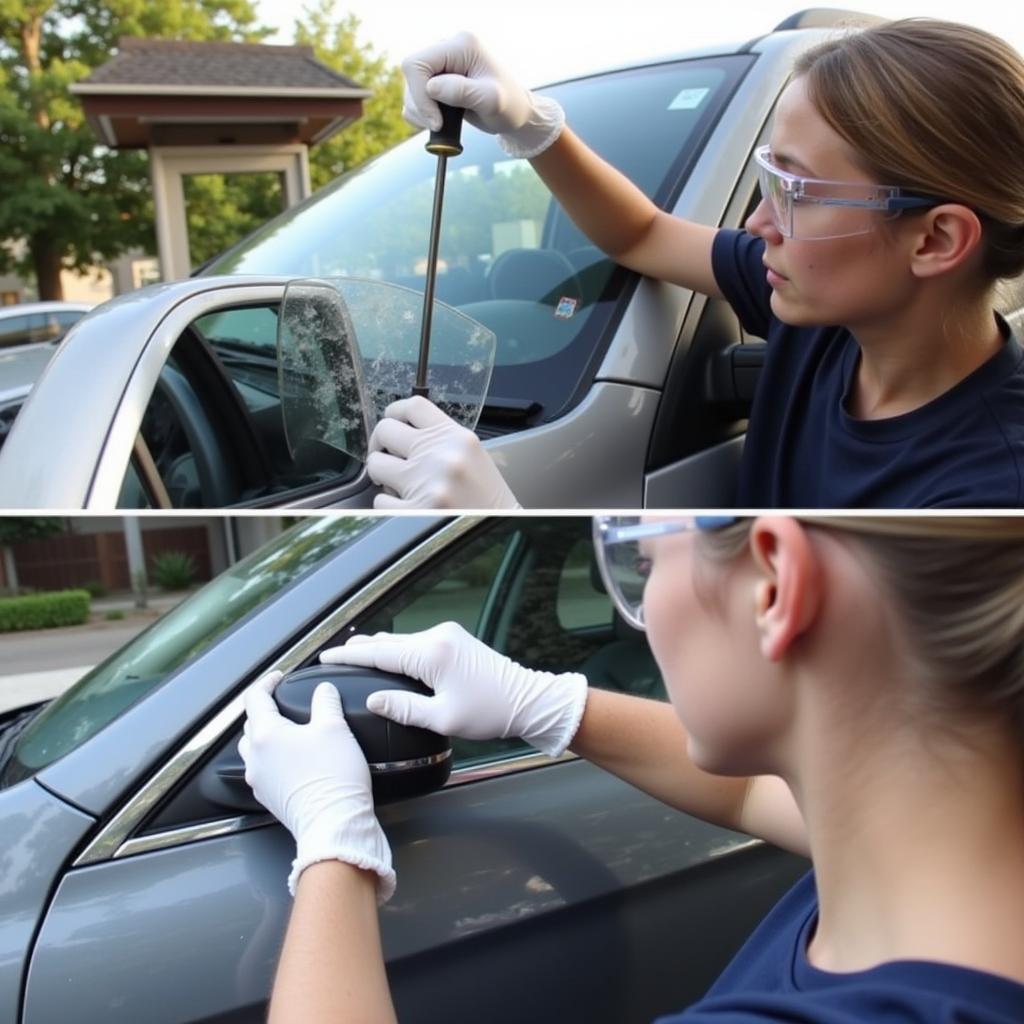Fixing the inside lining of your car can seem daunting, but with a little patience and the right know-how, you can restore your car’s interior to its former glory. This guide will walk you through common interior lining issues, from sagging headliners to torn door panels, and provide practical solutions for How To Fix Inside Lining Of Car issues yourself.
Understanding Your Car’s Interior Lining
Car interior lining comprises various materials, each with its own set of challenges. From the fabric or vinyl headliner to the carpet and door panels, these components contribute to the overall comfort and aesthetics of your vehicle. Knowing the specific material you’re dealing with is crucial for selecting the appropriate repair method. Is your headliner sagging due to adhesive failure, or is the fabric ripped? Are your door panels showing signs of wear and tear, or have they been damaged by impact? Accurately diagnosing the problem is the first step towards a successful repair.
Common Interior Lining Problems and Solutions
Sagging Headliner
Perhaps the most common interior lining issue is a sagging headliner. This typically occurs when the adhesive holding the fabric to the backing board fails. Fortunately, this is often a DIY-fixable problem. You can use specialized headliner adhesive, available at most auto parts stores, to reattach the fabric. For smaller areas, pins or even double-sided tape can be a temporary fix. For extensive sagging, you might consider replacing the headliner entirely.
Torn or Damaged Door Panels
Door panels are susceptible to tears, scratches, and even holes. Minor damage can often be repaired using vinyl repair kits. For larger tears, patching the affected area with a matching fabric or vinyl piece might be necessary. Remember to clean the area thoroughly before applying any patches or adhesives. If your car’s radiator has a leak, this is an entirely different issue. You might want to look into fixing holes in car radiators.
Worn Carpeting
Worn or stained carpeting can detract from your car’s interior. While deep cleaning can often revitalize the carpet, severe wear might require replacement. Consider using floor mats to protect your car’s carpeting and extend its lifespan.
Tools and Materials You’ll Need
Having the right tools and materials will make the repair process smoother. Commonly needed items include:
- Adhesive: Specialized headliner adhesive, fabric glue, or vinyl repair adhesive.
- Cleaning supplies: All-purpose cleaner, microfiber cloths.
- Tools: Scissors, utility knife, screwdriver set, trim removal tools.
- Patching materials: Matching fabric or vinyl pieces.
- Safety equipment: Gloves, eye protection.
Expert Insight from John Miller, Automotive Upholstery Specialist
“Always choose high-quality adhesive designed specifically for automotive interiors. This will ensure a long-lasting repair and prevent the lining from sagging again.”
Step-by-Step Guide to Repairing a Sagging Headliner
- Prepare the area: Clean the headliner and the surrounding area thoroughly.
- Remove loose fabric: Carefully peel back any loose fabric from the backing board.
- Apply adhesive: Apply a thin, even layer of headliner adhesive to the backing board and the back of the fabric.
- Reattach the fabric: Smooth the fabric onto the backing board, ensuring there are no wrinkles or air bubbles.
- Secure the headliner: Use clips or pins to hold the fabric in place while the adhesive dries.
- Allow to dry: Let the adhesive dry completely before reinstalling any trim pieces.
If you’re having trouble with your car’s radiator, consider checking out this resource on how can i fix a pinhole in my car radatior.
Conclusion
Fixing the inside lining of your car is often a manageable DIY project. By understanding the materials, having the right tools, and following these steps, you can restore your car’s interior and save money on professional repairs. If you’re unsure about any step or need further assistance, don’t hesitate to contact us at AutoTipPro.
Need help with a pinhole leak in your radiator? Check out how to fix a pinhole leak in a car radiator. You can reach us at +1 (641) 206-8880 or visit our office at 500 N St Mary’s St, San Antonio, TX 78205, United States. We are always happy to help!
Expert Insight from Maria Sanchez, Automotive Interior Restoration Expert
“Prevention is key. Regularly cleaning your car’s interior and using protective products can help prevent premature wear and tear of the lining.” You can also learn more about radiator repairs, specifically how to fix a hole in your car’s radiator, by visiting this informative guide: how to fix a hole in your car radiator. Or if you’re dealing with a smaller hole, this guide on how to fix a hole in car radiator might be helpful.






Leave a Reply